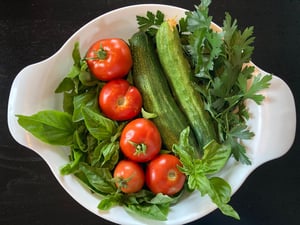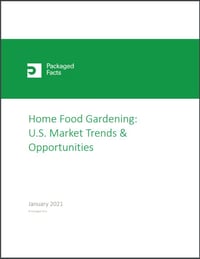 Before the pandemic, Becca Knoblock used to leave her house before 7 a.m. and white-knuckle her way through downtown Denver’s heavy I-25 traffic on her daily commute. Now that she works from home, she starts each day with a cup of coffee outside, where she takes a few minutes to tend her garden.
Before the pandemic, Becca Knoblock used to leave her house before 7 a.m. and white-knuckle her way through downtown Denver’s heavy I-25 traffic on her daily commute. Now that she works from home, she starts each day with a cup of coffee outside, where she takes a few minutes to tend her garden.
“My passion for gardening has definitely grown during the pandemic,” Knoblock says. “It’s just a lovely experience to be outside more often, doing simple tasks, and it’s incredibly satisfying to grow your own food from seeds. I find it a very life-affirming and peaceful thing to do during a scary time.”
More and more Americans have started gardening during the pandemic. According to Home Food Gardening: U.S. Market Trends & Opportunities by the market research firm Packaged Facts, 26% of surveyed American consumers agree that they are planting a food garden because of the pandemic.
“As consumers have been staying at home more and looking to find new hobbies, many have taken up gardening for personal enjoyment or simply as a more productive way to spend their time,” the report states.
The Seed-Buying Frenzy During COVID-19
The rising popularity of gardening has created both challenges and opportunities for businesses catering to home gardeners.
“Almost all seed catalogs are selling out — some as early as January,” Knoblock observes based on her own shopping experience and hearing from other gardening enthusiasts in an online seed-starting class that she’s taking.
The Washington Post reports that seed companies were “shell shocked” by the huge volume of orders they experienced. For example:
- Baker Creek Heirloom Seeds received 4,500 orders daily, twice the usual peak demand of spring, and was forced to close down its website and turn down new orders.
- Renee’s Garden usually received a peak of 350 daily orders in the spring, but that number had skyrocketed to 2,000.
Targeting Gardeners for Cross-Selling Opportunities
Seeds for vegetables, beans, and herbs have been in high demand, but opportunities to cross-sell other lawn & garden and outdoor living products also abound. That’s because food gardeners are more likely to take on outdoor or home improvement projects, according to a Packaged Facts survey.
“When you spend more time in your yard, it becomes like another room in your house,” Knoblock explains. “You become more aware of the space and what you can do with it beyond just mowing your lawn, and you get more and more ideas for what you want to do next.”
The Packaged Facts survey found that home gardening correlates with new installation of outdoor structures such as fire pits, landscaping paths, or patios. Gardeners may come into stores like Home Depot to purchase seeds and starter plants, but they may also be considering other projects that require much higher levels of investment (and potentially greater revenues for suppliers and retailers).
The Consumer Demographics of Food Gardeners
However, food gardening consumers are more complex than one might assume. The stereotypical gardener is often depicted as an older silver-haired woman living in a rural setting, but the current reality is much different.
According to the Packaged Facts survey:
- Full-time workers and current students are most likely to have a food garden.
- Younger consumers, such as millennials, are more likely to have a food garden.
- Men are more likely to report having a food garden than women.
- Those living in the West and Northeast are most likely to report food gardening.
- Urban consumers are more likely to have a food garden, despite having more limited space.
- Those with children and people who are married or partnered are more likely to have a food garden.
"Many consumers have a food garden and engage in food gardening because they enjoy gardening, like the outdoors, and think it is satisfying to care for plants and see their work yield results," the Packaged Facts report explains.
In addition, many consumers who plant a garden also believe homegrown produce tastes better and is healthier and more nutritious. “Until you grow your own food, you don’t realize carrots could taste that sweet, or a tomato could be so flavorful,” Knoblock says. “It blows your mind a little bit.”
Where to Learn More
 Home Food Gardening: U.S. Market Trends & Opportunities is the go-to source for a complete understanding of U.S. consumer trends in food gardening. This report combines Packaged Facts’ extensive monitoring of the food and beverage and gardening market with proprietary surveys, and evaluates current trends and future directions for marketing and retailing, along with consumer patterns during the pandemic and across the broader food and beverage market.
Home Food Gardening: U.S. Market Trends & Opportunities is the go-to source for a complete understanding of U.S. consumer trends in food gardening. This report combines Packaged Facts’ extensive monitoring of the food and beverage and gardening market with proprietary surveys, and evaluates current trends and future directions for marketing and retailing, along with consumer patterns during the pandemic and across the broader food and beverage market.
Visit the Packaged Facts website using the link above to read the full abstract, download a free sample, or purchase the report.

